Hello, L.A., you’re up way past your bedtime, aren’t you? That is the line that greets you when you arrive at your apartment ‘haven’ in Santa Monica after a poorly done cutscene and wonderful tutorial, coming from a radio show that is just one of the many delicious undercurrents that make Vampire the Masquerade: Bloodlines one of the absolute best role-playing games of the past decade.
It is hard to think that a mere five years ago releasing a product based on vampires would be considered a commercial liability, and that there hadn’t been a game released based on the Source engine, but that was the environment in November of 2004. Released into the pre-Twilight world on the same day as Half-Life 2 after being held back by order of Valve (it wouldn’t allow anyone else to release a Source based game before them), Bloodlines was perhaps doomed to commercial failure from the start. Soon enough Troika was gone, and it was revealed that over the first few months a mere 75,000 copies of the game had been sold, far less than the 200,000 by their first release Arcanum or even the 125,000 managed by their second release Temple of Elemental Evil.
We could certainly sit around all day and analyze the root causes of their demise, and that has actually been done to some extent or other through the years, but I’m much more interested in diving right into a look back at their masterpiece, Vampire the Masquerade: Bloodlines.
You Only Get One Chance To Make A First Impression
For many reviewers and gamers, their impression of Vampire the Masquerade: Bloodlines was etched in stone before they even took control of their character. The game starts with an fantastic opening song and intriguing menu screen … and leads into an very amateur-ish looking opening cinematic, with floaty gliding characters, odd breezes blowing clothing around, mysterious occasional cuts to black, and an almost incompetent lack of audio synchronization. Yet for those who have played more than once, you realize that the opening presents loads of critical foreshadowing information that could have been excellent if properly done.
Back in late 2004, the same-day-as-HL2 release pretty much invited comparisons of the visual qualities of the two games, and the stark difference in detail and quality made it pretty clear that Bloodlines wasn’t given all that much love and support by those developing the Source engine. It really felt like an earlier iteration was used, sort of like comparing the graphics of the shooter games Star Trek Elite Force and Elite Force II, both of which used the Quake 3 engine but which show a considerable difference in presentation quality. Over time, the contrast has only increased as Half-Life 2 has been enhanced with HDR lighting and other engine optimizations and extensions … while Bloodlines has remained static.
However, playing the game now I find that it still looks quite good. It certainly looks better in general than many other role-playing games released much later. The faces are realistically modeled, as are the character movement and combat animations (though some have that funky Postal 2 look about them as they walk about town). Similar to other Source engine games, the focus of detail is on what is immediately in front of you, so the background cityscape tends to be much less detailed. Things like cars and buildings and streets are detailed enough to present a realistic view of the desolation of Los Angeles, but things like papers on the street are just colored labels, and windows and doors generally provide no sense of depth or being discrete elements. So interestingly my conclusion is that I am more impressed with the visuals looking back at it as a five year old game than I was when it was new.
When A Normal Drug-Enhanced Erection Just Isn’t Enough!
Before you start the tutorial, you need to build a character. Let me be blunt – compared to Vampire the Masquerade: Bloodlines, class selection in most other role playing games is like choosing a plastic toothpick: they are all basically the same except for the color. Bloodlines offers classes that not only alter the core combat capabilities and certain dialogue options, but the very flow of the game. You can be choose from one of seven clans, including Brujah, Gangrel, Malkavian, Nosferatu, Toreador, Tremere, or Ventrue. Brujah tend to be savage and violent, tending towards anarchy; Gangrel are also warriors, but are the most animalistic of clans; Malkavian are insane, but utterly hilarious; Nosferatu are grotesque and unable to mingle with humans; Toreadors are leaders in both social and political circles; Tremere are vampire mages; and Ventrue are the nobility.
While it can be argued that some of the classes present a fairly standard set of gameplay variation, others offer ranges of choices and subject the gamer to an array of restrictions that make for truly unique experiences. The Tremere class is the vampire mage, and offers an array of Blood Magic that is stunning from a combat perspective, but also gets a special haven in the Chantry. That really isn’t a huge gameplay differential from the warrior classes of the Brujah or Gangrel, each of which play differently from one another as well. The Toreador and Ventrue are focused away from combat as a primary means of getting things done based on their charm and nobility, but based on choices can also find plenty of chances to mix it up. By playing across several of these classes you will see a wide variety of gameplay options that is fairly similar to what is offered in the majority of RPG experiences.
But the real distinction in playing the game is choosing the Nosferatu or Malkavian class. The Nosferatu are the classic ‘gruesome vampire’ depicted by Mac Schreck in the film of the same name from 1922 (have you seen it? You really should, you know.), and as such are not able to blend into human society in any way. This makes the game completely different, since you need to prowl the sewers and avoid being seen by ordinary people around the city, otherwise the alarm is raised and you’ll be hunted by the police and incur a Masquerade Violation.
However, playing as a Malkavian in Bloodlines is an experience unlike anything else in gaming. I mean, seriously, how often do you get to have a heated argument with a Stop Sign? Seriously – you can approach a stop sign and get into an argument. The dialogue options are hilarious throughout the game. But don’t mistake that as meaning you’re a one-dimensional side-show freak, either. Malkavians see everything that is going on and are very often better in tune with reality than the other classes – and even some of the characters themselves! Of course, sharing is caring, so one of the best things you can do as a Malkavian is to confuse or spread your insanity to other characters.
You’ve Made A Powerful Enemy Today, Sign!
Bloodlines uses the Vampire the Masquerade pen & paper role-playing system as its basis, which gives you loads of skills to pour points into as you advance, as well as some gameplay restrictions. When you complete quests or specific tasks you gain experience points (XP) that you can immediately spend advancing your character’s skills. This is different from most systems as you don’t earn experience towards gaining levels, but rather get a certain amount of points that help you advance any skill of your choice. It is also different in that you are not rewarded for killing enemies.
The skill system has three ‘tiers’: Attributes, Abilities, and Disciplines. There are three categories in each tier. The Attributes are Physical, Social and Mental with three areas each; Abilities are Talents, Skills and Knowledges with four areas each; and there are three disciplines Disciplines based on your character class. Attributes and Abilities work together to define your Feats, which are shown along the right side of the character screen. These are what define success or failure at many tasks.
Each skill has five levels, and costs incrementally more as you go from level to level. For example, if you want to take a level of the Computer Knowledge Ability . That will cost you 3XP; then going to the next level costs 6XP, and so on. Advancing skills shows immediate benefit in different ways – if your Hacking skill is too low, you can raise it using a couple of different Attributes or Abilities. Most Attributes and Abilities impact more than a single feat, but you will never get enough XP to fully level up more than a couple of feats, so building your character requires careful thought and planning.
Your Disciplines cost more to level up, but are a dramatic part of how you interact with the world and complete combat and other quests. These are the things that really define how you will role-play your particular class. For example, if you play as a Tremere, one of your disciplines is Thaumaturgy – Blood Magic. As you gain levels in this class you can dish out devastating damage – to the point of incapacitating enemies while their blood boils and they eventually explode.
There are two restrictions placed on you by the game – humanity and the Masquerade. The humanity system is based on the idea that the Vampire is part human and part beast, and it is the beast that gives super-human strength, speed and so on. However, by giving in to the beast too often by killing rather than just taking some blood, and by making choices that go against humanity, you lose contact with your remaining humanity. As your humanity dwindles your ability to contain your inner beast also dwindles, and if you completely lose your humanity you are nothing but an out of control monster that must be put down.
The Masquerade is based on the thought that there are vampires among us, and they mask their behavior and act as respectable citizens so as not to draw attention to vampire society. There are many times throughout the game where it is possible to say or do something to unveil some part of vampire society – but each time gets you a ‘Masquerade Violation’, and if you get too many you will be put down as a rogue vampire. You can get Masquerade Redemptions by making choices to further help hiding vampire society, but those are rare.
I can tell you and I are going to get along just like fire hoses. When we get turned on, there’s bound to be flames!
As I mentioned before, your first taste of the game is a haunting musical refrain over a blood-dripping opening menu. Composer Rik Schaffer put together an amazing array of dark and thematic music that weaves in perfectly with the loads of licensed songs used throughout the game. If you came to the game expecting typical fantasy RPG music or modern metal music associated with shooters – or even the dark gothic fantasy music associated with many vampire movies – you would be sorely mistaken.
Each district you visit has its own theme, and each is moody and evocative, mixing slow moving non-thematic structures with rhythmically driven harmonic themes. This is what you here while you explore the streets of each area, and when you go places without their own theme. Within each district, there are several places with a specific theme – for example the Luckee Star motel in Downtown. These smaller themes are directly associated with the location and the quest you are undertaking.
In terms of the licensed songs, there is an excellent assortment of edgy techno-punk that suits each different place in the game. Ministry rewrote the lyrics to one of their songs and came up with Bloodlines, a very fitting theme for Club Confession. My personal favorite song is from the group Genitorturers called Lecher Bitch, used in the Last Round club where the Anarchs hang out, and where you need to go to meet up with Nines Rodriguez. There you run into two of my favorite characters in any game – Smilin’ Jack, who took you through your tutorial, and the ironically named Damsel, who constantly lashes out at you with loads of attitude.
While all of the music is excellent and really immerses me just listening to it again, there are certain pieces that I place at the pinnacle of the audio-visual experiences I have had in video games. First, there is Lecher Bitch – the combination of the Anarchs, the seedy club, Damsel’s sneering attitude and that song are just a perfect complement. The other one is the musical theme called ‘disturbed and twisted’ that plays while you are working on the Haunted Hotel quest for Jeanette. The area is creepy and tense, the quest full of horrific implied violence, and there are enough things that ‘go bump in the night’ that the arrhythmic and atonal themes are perfectly suited to keep you on edge.
ROWR! I am a mighty thesaurus! Give me your script or I’ll bite your head off!
I made a big deal about the role-playing possibilities in Bloodlines, but what good are those options without a great story and loads of dialogue options to pursue? Fortunately the story is very well done and the dialogue integrates tons of role-playing and replay possibilities throughout.
The story is largely a linear, plot-driven tale of someone who is unwittingly brought into the vampire fold and winds up in the midst of cataclysmic events occurring in the Los Angeles vampire society with far reaching potential impact. Rather than the typical farmboy or amnesiac tale we get in most fantasy games, Bloodlines starts with your character being ‘sired’ by what appears to have been someone met at a club for a one-night stand. Since this is not allowed to happen without the blessing of the ruling society, your sire is executed and you are … a problem.
Of course, this problem causes a potential conflict between the various vampire factions so you are taken under the wing of the ‘Prince’ of LA, given a haven, and set out on some tasks. Depending on your class you will also get some additional quests, and regardless you will encounter plenty of optional quests and interesting characters, starting right away with the Anarch called Jack. He will get you acquainted with everything you need to know to make your way successfully through the game in terms of controls, combat and using skills … and, of course, feeding.
Every time I yank a jawbone from a skull and ram it into an eye socket, I know I’m building a better future.
For some, real-time combat from a first person perspective means that the game isn’t a ‘real’ RPG. And because Bloodlines uses the Source engine shared with Half-Life 2, some folks are further emboldened to call it a shooter with RPG elements.
I think that is a load of crap. I consider the combat and genre as separate items.
But one thing is clear – Bloodlines uses a first person perspective real-time combat engine based on the Source engine. The game also auto-switches to third-person view for melee combat, which works extremely well. During the tutorial sections you learn how to handle both melee and armed combat, both of which have positive and negative elements.
Since the core game is based on the same engine that powers one of the best shooters in recent years, you would expect the game to excel as a FPS. In general it works very well, with all of the typical shooter elements intact: you aim, shoot, reload, pick up ammo, and so on. But since the game is a RPG, you also need to take the character skill levels into account. This means that the same 38-caliber pistol hitting for 5-6HP of damage during the tutorial will do much more damage as you gain more and more skills. And augmenting your natural skills with vampiric abilities can turn you into a lethal shooting force. But the game lets you know in the form of Jack in the tutorial that vampires are quite able to soak gun damage, so as you battle more and more vampires, your guns will be less and less effective.
Bloodlines also features a top-notch melee engine. In fact, the first battle you have uses a tire iron as a weapon! Given super-human speed and strength, melee combat seems more suitable for a vampire. The melee battles are full of typical ragdoll physics action, and look appropriately exaggerated in terms of impact of hits based on the game’s 2003/2004 vintage. When engaging in melee combat the game switches to third person view, so you can see around your character and gauge better how to attack. Similar to gun-based combat, your melee damage is a combination of the weapon’s inherent damage factor along with modifiers based on skills and attributes you can choose. One thing that is very clear – you will not get enough skill points to excel at both guns and melee combat, especially if you plan to advance any of your disciplines.
Because overall my favorite clan to play is Tremere, I was also able to avail myself of the Thaumaturgy class discipline tree to unleash some devastating ‘blood magic’. As with any other mage class, the balance of mana (blood) vs. using spells is a concern early on, but becomes less so as the game progresses. Since every vampire is a wrecking machine, I was able to combine magic and melee very effectively. My personal favorite spell is Blood Boil, which incapacitates a single enemy until they explode.
Correct me if I’m wrong, but did we just kill a land shark?
Of course, half the fun of a combat system comes from interesting enemies, and in that regard Bloodlines doesn’t disappoint. You will face humans as well as vampires from all clans and an assortment of special monsters and bosses that will challenge you considerably. From the very beginning you will deal with enemies of all sorts – some seem to have a death wish and simply charge at you, but quite often your enemies will attempt to flank you or fire through windows or use other strategies to make your life difficult.
Aside from strategies and tactics, your enemies have two other ways to help vary the experience of replaying with different clans. First, each enemy has different resistances – particularly ‘boss’-level creatures – so while you can take out some enemies easily with guns, others require the use of melee weapons or vampiric disciplines. But enemies also represent every possible vampire clan as well as many other types of creatures. Too many games offer enemies with a very limited set of skills, or simply use a form of ‘cheater AI’ to make things more challenging. But the enemies in Bloodlines make use of the same skills and disciplines you can access – and they are every bit as effective.
All the Rancid Taste of Margarine With All the Saturated Fat of Butter!
As I mentioned, Bloodlines didn’t do itself any favors in terms of a first impression, but in some ways it was simply a sign of things to come. Immediately after release there were reports of a game-killing bug impacting some gamers at a critical point in the game. Over the first couple of months the game was patched up to an official 1.2 version, which cleared up all of the killer bugs, and made the game fully playable and put the content in order. Since 2005 I have never had a crash, incomplete quest, mis-matched dialogue, or any other issue in the many times I have played.
But recently I also did something for the first time – I installed the ‘unofficial patch’ from ‘Wesp’. One reason I hadn’t done so before was that earlier patches I read about seemed to make some editorial choices about what to change in the actual game content as well as fixing issues in nearly every area of the game. Since I was happy with the game as it was released and officially patched, I stayed away.
But I really respect the tremendous amount of work that Wesp and others have done through the years, so I felt that I owed it to them to give it a shot this time. The current patch is 6.8, and there are install options for ‘basic’ and ‘plus’ version of the patch. The ‘plus’ version restores loads of content, patches issues, and makes some significant changes to gameplay according to various notes. I was looking for a ‘lighter touch’, so I chose the ‘basic’ install. The first difference was that it helps out with some glitches I was seeing at start-up on Windows 7, but aside from that I didn’t notice too much of a difference. Little things like proper gender addressing, mis-matched audio and text, and so on. In other words – some skillful clean-up that improved things without making me feel the game was ‘messed with’. As I mentioned, I have had very few problems in multiple playthroughs, and wasn’t looking for big alterations.
The bottom line is this – Troika got the game working before they died, but a dedicated set of modders has done an amazing job of continuing to find and fix the variety of issues and also tweak things more to how they see the game should have been made. I love the effort – and also the option to choose between ‘light’ and ‘heavy’ changes.
I hate to tell you this, but I’m insane and what you’re saying STILL doesn’t make sense to me.
In every game it is pretty clear when you have started the ‘end game’. Bloodlines is such a game, where you get to a point that the focus of the remainder of the game is combat after combat after combat. Of course, unlike some games (Divine Divinity), there is dialogue and choices between you and the actual finale. This is a point that divides many fans – some find the combat throughout somewhat lacking compared to everything else, so when it becomes the primary focus many gamers simple switch off. Personally I love the combat, so while I lament the fact that there aren’t more options integrated into the final sections of the game, it remains a visceral part that I thoroughly enjoy.
The same can be said for other areas of the game: pretty much everyone loves Santa Monica for the atmosphere and the amazing variety of quests. Once you move into other areas, opinions again start to divide between those who love the sustained questing in the other areas, and those who find the overall design lacking after departing the first section of the city. While I adore Santa Monica, many of my favorite quests – Fat Larry, for example – happen elsewhere. There are some really well designed sections outside of the initial city that I have loved revisiting.
… but that doesn’t mean you can stop thinking about me …
Everyone has games that they mark as personal favorites; games whose strengths greatly outweigh any flaws encountered. For many RPG fans, Bloodlines is such a game – a flawed gem that offers such superlative writing and quests and characters that it stands as one of the best RPGs of the decade. For me, it is one of my all-time favorite games, combining excellent technical details, wonderful quests and characters, and an environment that has pulled me in numerous times through the past five and a half years.
Where to Buy: Direct2Drive.com (Digital Download), also available on Steam
Price: $19.99
What I Like:
+ Great quests
+ Excellent characters
+ Immersive environments
+ Enjoyable action combat
+ Great support with ‘unofficial patches’
What Needs Improvement:
– Opening cutscene is terrible and amateurish
– Graphics feel dated and flawed compared to HL2
Source: Personal game purchase
Version: Official Patch 1.2, Unofficial Wesp 6.8

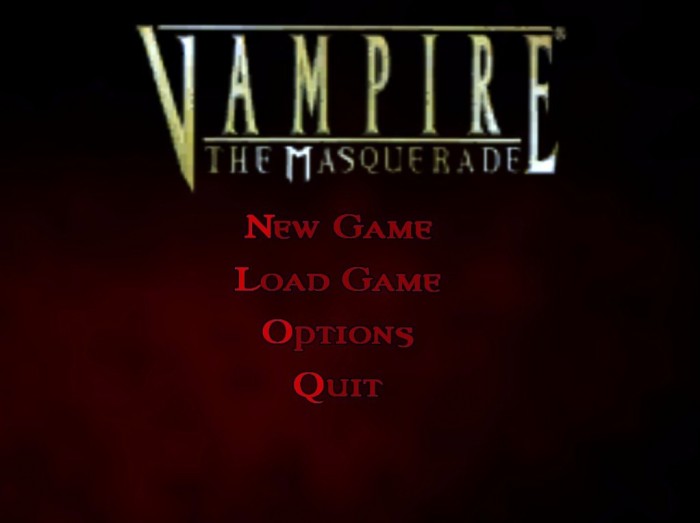
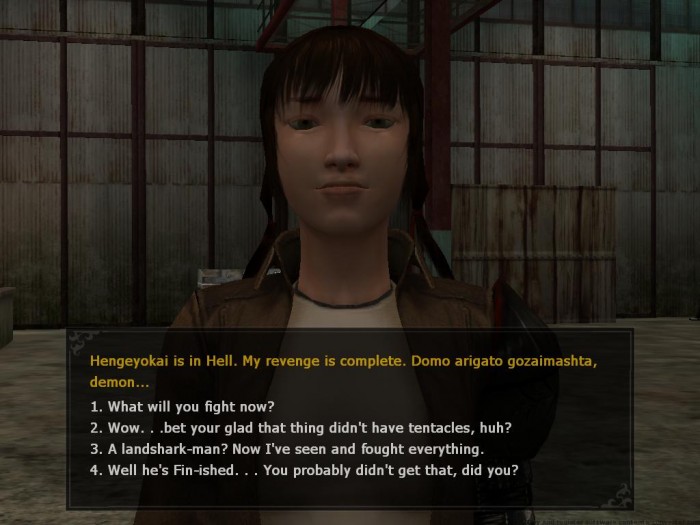
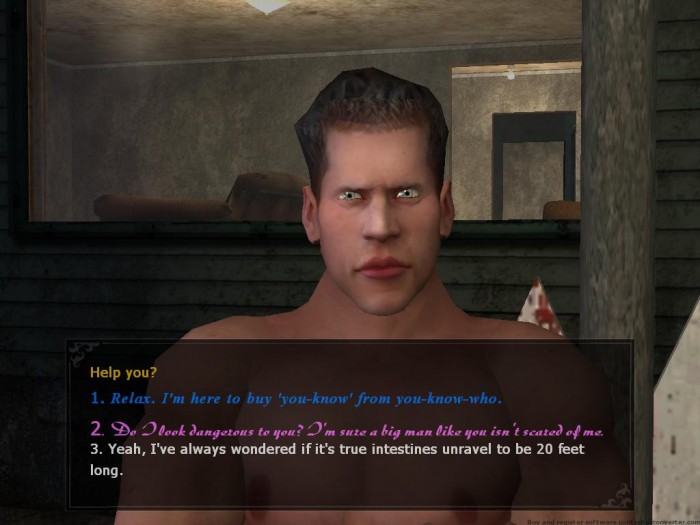
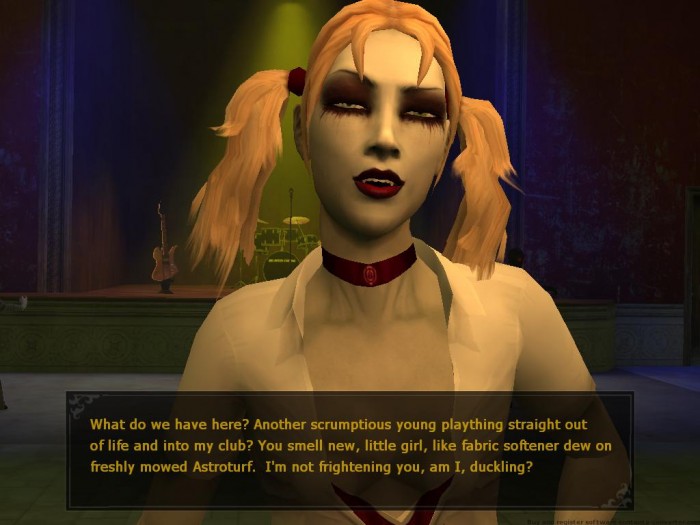
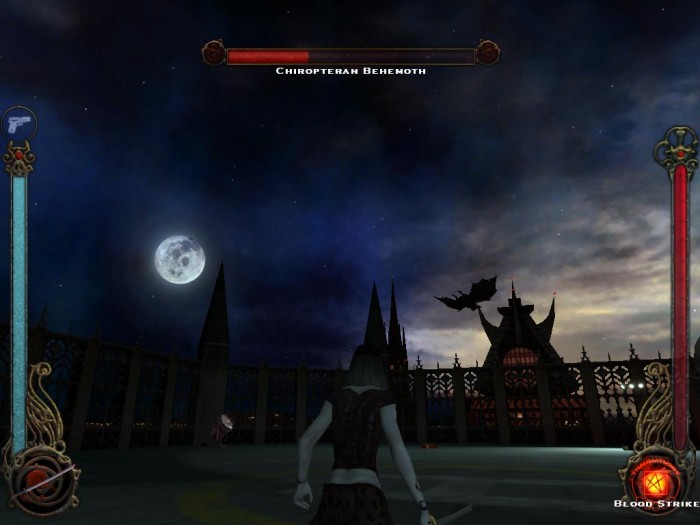
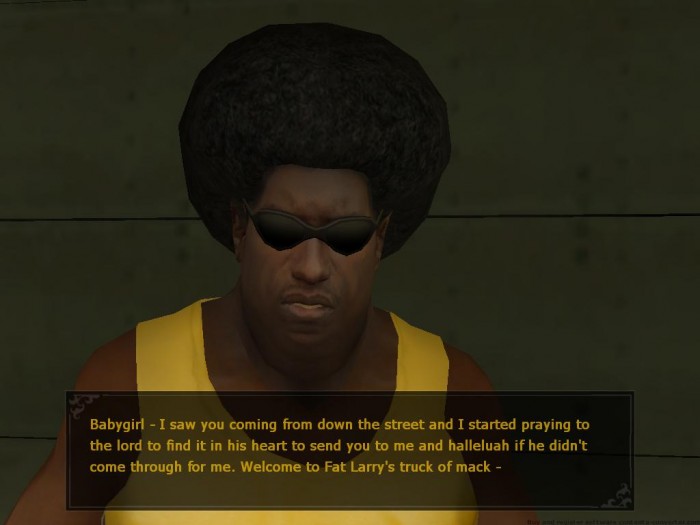
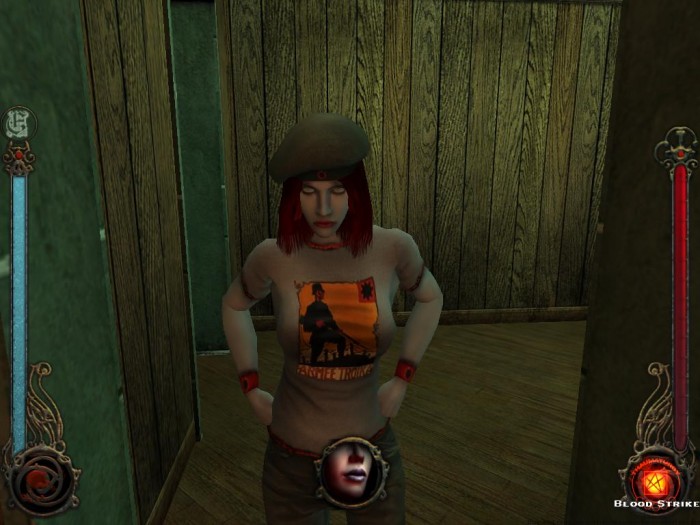
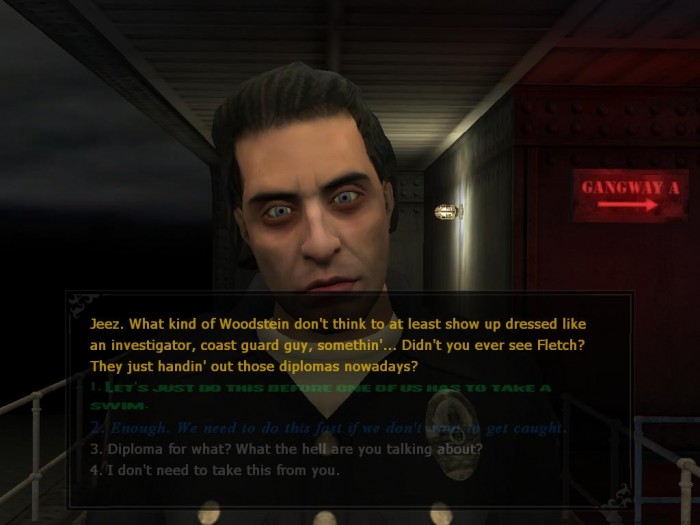
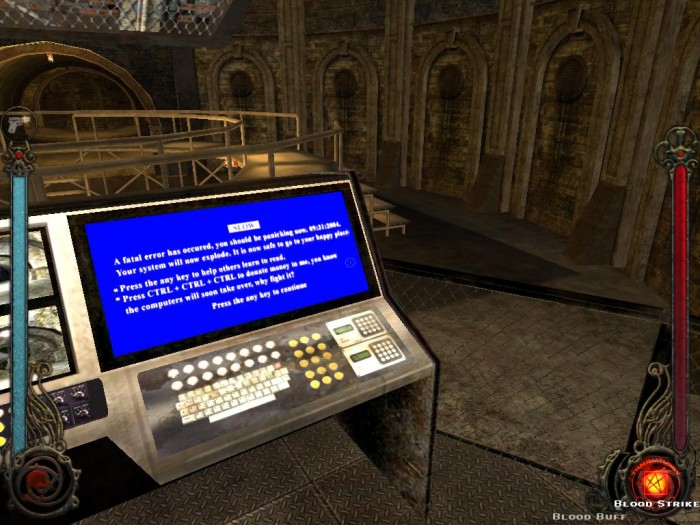
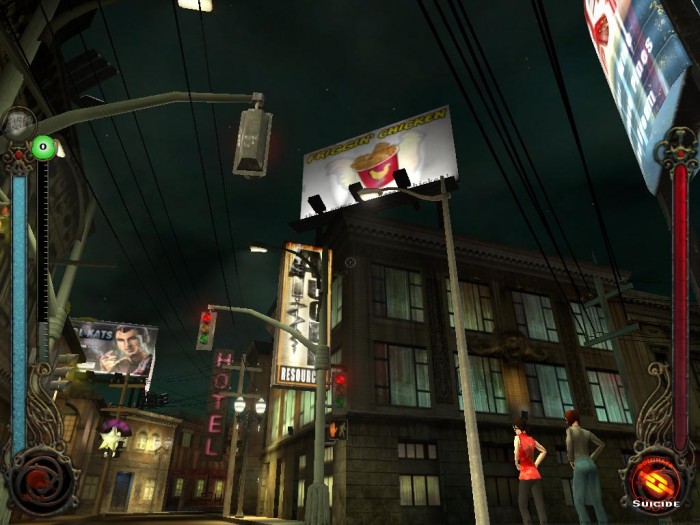
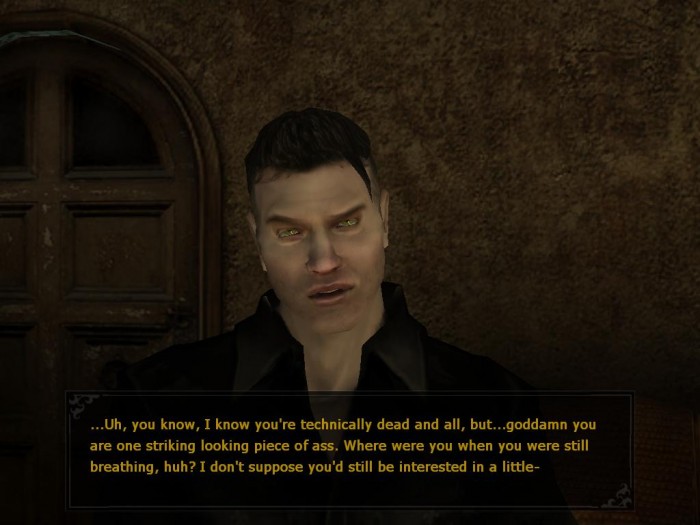
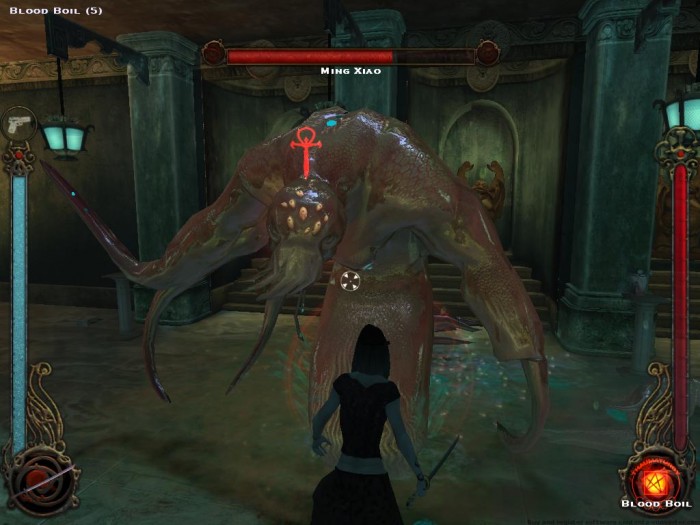
Retrospective: Vampire The Masquerade – Bloodlines | Gear Diary: Let me be blunt – compared to Vampire the Masquer… http://bit.ly/9SmBNV
holey cow, really great comprehensive review Michael, don’t think I’ll be picking up this game as it takes me forever to beat any game, but will look into it when I am in need of a new game. hee, love the screen shots of characters!
@abitnerdy
It is a great game, too bad it is only sold in the North America, I’d like to get a proper licensed version and try to replay it someday (played it when it came out, but at some point got too… ugh… scared to continue. It is very atmospheric! The Haunted Hotel was playable only with sounds off, otherwise I was jumping every other second :)).
Thanks for the review, lots of nostalgia here 🙂
@NPC42 – have you tried Steam? I can see the US/Canada restrictions on Direct2Drive, but on Steam it even lists multiple languages … worth checking, anyway.
@abitnerdy – thanks! Yeah, this is a pretty huge game, and definitely not for everyone … but for the hardcore RPG crowd it is a true classic.
Ha, it does actually show as available – for some reason I assumed it wouldn’t. Thanks for the pointer, Michael, I will surely get it (at an opportune moment, when my gaming queue frees up a little)! 🙂
Excellent Retrospective. Still ranks as my favorite video game rpg ever, despite all it’s flaws. There are three rpgs that stand above the rest for me: Earthbound, Planescape Torment and Vampire the Masquerade Bloodlines.